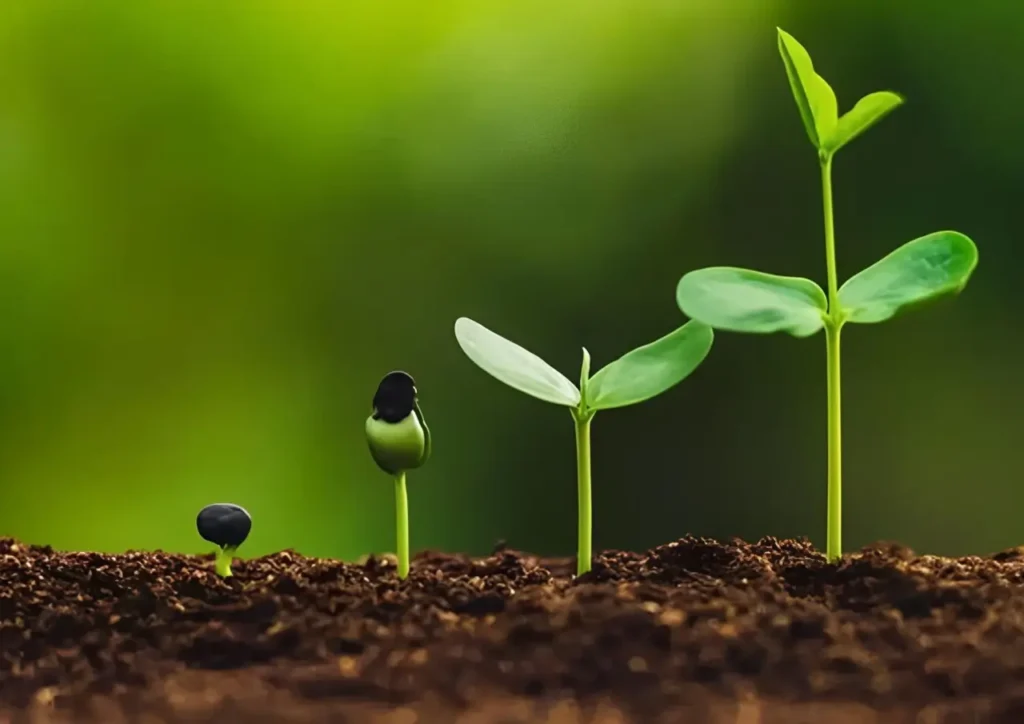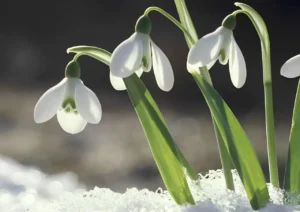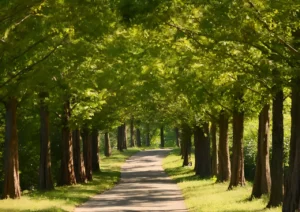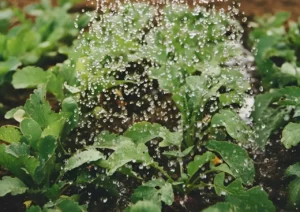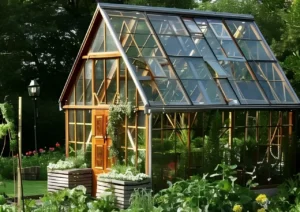Table of Contents
Gardening is a rewarding hobby that brings a sense of fulfillment, beauty, and sustainability to our lives. Whether you’re cultivating a vibrant flower garden, a bountiful vegetable patch, or a serene herb garden, the foundation of your gardening success lies beneath your feet – in the soil. Choosing the right soil for your garden is a critical step that can significantly impact the health and productivity of your plants. In this comprehensive guide, we’ll delve into the intricacies of soil selection, helping you make informed decisions to ensure your garden thrives.
Understanding Soil Basics
Before diving into the specifics of choosing the right soil, it’s essential to understand what soil is and why it matters so much to your garden.
What is Soil?
Soil is a natural resource composed of minerals, organic matter, water, and air. It serves as the medium in which plants grow, anchoring their roots and providing essential nutrients, water, and oxygen. Soil is a complex ecosystem that supports a myriad of microorganisms, insects, and other organisms that contribute to plant health.
Soil Composition
Soil is typically composed of three primary particles: sand, silt, and clay. The proportions of these particles determine the soil’s texture, which in turn affects its water retention, drainage, and nutrient-holding capacity.
- Sand: Coarse particles that provide good drainage but poor nutrient retention.
- Silt: Medium-sized particles that offer a balance between drainage and nutrient retention.
- Clay: Fine particles that hold nutrients well but can lead to poor drainage and compaction.
Soil Structure and pH
Soil structure refers to how soil particles are arranged and clumped together. Good soil structure promotes healthy root growth and adequate air and water movement. Soil pH measures the acidity or alkalinity of the soil, which affects nutrient availability. Most garden plants prefer a slightly acidic to neutral pH (6.0-7.0).
Types of Garden Soil
Understanding the different types of garden soil is crucial in selecting the right one for your plants. Here are the main types:
1. Loamy Soil
Loamy soil is considered the ideal garden soil because it combines the best properties of sand, silt, and clay. It is well-draining, nutrient-rich, and has good structure. Loamy soil supports a wide variety of plants, making it versatile and highly desirable for gardeners.
2. Sandy Soil
Sandy soil consists mainly of large particles, providing excellent drainage but poor nutrient retention. It warms up quickly in the spring, making it ideal for early planting. However, it requires frequent watering and fertilization to maintain plant health.
3. Clay Soil
Clay soil is composed of fine particles that hold water and nutrients well but can become compacted, leading to poor drainage and root growth. Amending clay soil with organic matter can improve its structure and drainage capabilities.
4. Silty Soil
Silty soil has a smooth texture and retains moisture well, offering good nutrient availability. However, it can become compacted and poorly drained if not managed properly. Adding organic matter can enhance its structure and aeration.
5. Peaty Soil
Peaty soil is high in organic matter and moisture-retentive, making it acidic and nutrient-rich. It is excellent for acid-loving plants but may require lime to adjust the pH for other plants. Proper drainage management is essential to prevent waterlogging.
6. Chalky Soil
Chalky soil is alkaline and contains large amounts of calcium carbonate. It is free-draining but can be shallow and stony. Acid-loving plants struggle in chalky soil, so it’s crucial to choose plants that thrive in alkaline conditions or amend the soil to balance the pH.
Assessing Your Garden Soil
Before selecting the right soil for your garden, it’s essential to assess the existing soil to understand its characteristics and how to improve it if necessary.
Soil Testing
Soil testing is a vital step in determining your soil’s pH, nutrient levels, and overall health. You can purchase a soil testing kit or send a sample to a local extension service or laboratory. The results will guide you in amending your soil to meet your plants’ needs.
Visual and Tactile Examination
In addition to soil testing, a visual and tactile examination can provide valuable insights into your soil’s texture and structure. Here’s how to conduct a simple soil test:
- Take a Soil Sample: Dig a small hole and remove a handful of soil from different areas of your garden.
- Observe Texture: Rub the soil between your fingers to assess its texture. Sandy soil feels gritty, silty soil feels smooth, and clay soil feels sticky.
- Perform a Ribbon Test: Moisten the soil and try to form a ribbon by rolling it between your fingers. Sandy soil won’t form a ribbon, silty soil forms a short ribbon, and clay soil forms a long, cohesive ribbon.
Drainage Test
A drainage test helps determine your soil’s ability to retain and drain water. Dig a hole about 12 inches deep and fill it with water. Allow it to drain completely, then refill it. Measure the time it takes for the water to drain again. If it drains within 1-2 hours, you have well-draining soil. Longer drainage times indicate poor drainage and potential compaction.
Amending Your Soil
Once you’ve assessed your soil, you may need to amend it to create an optimal environment for your plants. Here are some common soil amendments:
Organic Matter
Adding organic matter, such as compost, well-rotted manure, or leaf mold, improves soil structure, drainage, and nutrient content. Organic matter enhances microbial activity, promoting healthy soil ecology.
Lime
If your soil is too acidic, adding lime can raise the pH to a more neutral level, making nutrients more available to plants. Use lime sparingly and re-test your soil periodically.
Sulfur
For alkaline soils, adding sulfur can lower the pH, creating a more suitable environment for acid-loving plants. As with lime, use sulfur cautiously and monitor soil pH regularly.
Sand and Perlite
To improve drainage in heavy clay soils, incorporate sand or perlite. These amendments help break up compacted soil and enhance aeration.
Gypsum
Gypsum is beneficial for clay soils as it improves structure and drainage without altering soil pH. It helps reduce compaction and promotes root growth.
Matching Soil to Plant Needs
Different plants have specific soil preferences. Matching the right soil to your plants’ needs ensures healthy growth and productivity.
Flower Gardens
For flower gardens, loamy soil with good drainage and moderate nutrient content is ideal. Amend sandy or clay soils with organic matter to create a well-balanced environment. Conduct soil tests to adjust pH as needed.
Vegetable Gardens
Vegetable gardens thrive in loamy soil rich in organic matter. This soil type provides the necessary nutrients and drainage for robust plant growth. Regularly amend the soil with compost and perform soil tests to maintain optimal conditions.
Herb Gardens
Herb gardens generally prefer well-draining soil with moderate fertility. Sandy loam or loamy soil is suitable for most herbs. Some Mediterranean herbs, like rosemary and lavender, thrive in slightly alkaline, sandy soil.
Acid-Loving Plants
Plants such as blueberries, rhododendrons, and azaleas require acidic soil. Peaty soil or soil amended with sulfur is ideal for these plants. Regularly test and adjust the pH to maintain acidic conditions.
Container Gardens
For container gardens, use high-quality potting mix rather than garden soil. Potting mixes are designed to provide excellent drainage, aeration, and nutrient content for containerized plants.
Conclusion
Choosing the right soil for your garden is a foundational step that can make or break your gardening efforts. By understanding the different soil types, assessing your existing soil, and making necessary amendments, you can create an optimal growing environment tailored to your plants’ needs. Regular soil testing and thoughtful soil management will ensure your garden remains healthy, vibrant, and productive for years to come. Remember, a thriving garden starts from the ground up – so invest time and effort in selecting and nurturing the right soil for your gardening success.

